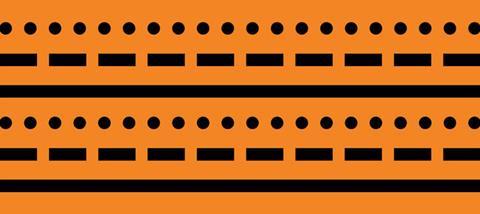
For the last six years, since the shocking child sexual exploitation (CSE) scandals across Britain broke, it feels as though CSE has been top of most local authorities’ priority lists when it comes to safeguarding vulnerable children. This has enabled a light to be shone on a previously hidden form of child abuse.
However, professionals working to protect children have started to uncover further ways in which children and young people are being exploited. This time it takes the form of running drugs, more commonly known as ‘county lines’ or ‘going country’.
County lines follow a fairly sophisticated business model, whereby young people in urban, inner-city areas where drug dealing is saturated are being exploited to run drugs out into the counties for distribution, where they can target a new location and bring in new business. And it is good business. The police are currently aware of 2,000 county lines across the UK, which is no doubt an underestimation.

Children as young as 12 are being targeted at shopping centres, fast-food outlets, youth groups and other places where young people congregate. They are enticed with promises of large sums of money, sometimes up to £500, which for young people living in poverty is often too good to turn down.
One of the most common techniques used by these exploitative groups is to manipulate the young person to agree to transport drugs – usually class A – to a particular location. On arrival, this young person is mugged and the drugs are stolen. Unbeknown to the young person, the mugging was staged by the adults exploiting them. As a result, the young person is now in debt, and they receive threats of violence against themselves or their families if they do not pay back this debt, which increases as each day passes. This ‘debt bondage’ is one the main reasons we see young people entangled in this criminal activity for so long.
The most common way for this never-ending debt to be repaid is through ‘working in a cuckooed property’ in the county area: packing the drugs and facilitating their sale. A cuckooed property is one that has usually been ‘obtained’ from a vulnerable adult with difficulties around drug and alcohol misuse or mental health struggles. Conditions in these locations can be very poor. Young people have returned with bedbug bites, poor hygiene, exhaustion and hunger from being made to work endless hours with threats of violence if they do not comply.
The time these young people spend running county lines can vary. Local authorities see young people go missing for weeks on end without a trace, despite efforts made by police and wider agencies. Exploiters are becoming more savy and now tend to send young people to closer locations for just 24 hours in order to reduce the chances of their parents or carers reporting them missing to the authorities. Even when young people are reported missing the police and other agencies are faced with significant challenges in locating them as mobile phones are turned off, Oyster cards are not used for travel, and the young person has limited or no contact with their family members. They become invisible.
The next time families and professionals make contact with these young people they have either returned from a period of being missing, and are refusing to say anything about where they have been, or they have been arrested for possession with intent to supply drugs in an unknown location far from home.
The challenge faced at this stage is that this young person is often criminalised. Extensive work is being carried out by the National Referral Mechanism (NRM) to identify such young people as having been trafficked But gathering evidence is complex and frustrating, as professionals are often faced with a wall of silence from the young person and their peers.
Children as young as 12 are being targeted at shopping centres, fast-food outlets, youth groups and other places where young people congregate
Similarly to CSE, the ways in which criminal exploitation is being addressed is twofold. Most importantly, police and agencies are working to identify the perpetrators and disrupt the exploitative activity. However, this is not easy. They have limited information to hand and must work hard to engage with vulnerable, impressionable young people, who understandably believe any threats being made against them will be carried out, and often maintain hope that they will eventually be paid for their efforts.
Alongside this work, children’s services and wider agencies, including many within the charity sector, are working to engage young people in more positive alternative activities, educating them on the risks they may be exposed to, dispelling myths and working to become trusted adults they can confide in and feel supported by.
Increasing the protective factors around children, both within the family and community, helps to reduce risks. The risks young people are exposed to are becoming more complex and we have to adapt to these changes if we want to make our children safer. As those working alongside children, young people and families, we can offer support in this area.
Some potential signs that a young person might be at risk:
- Long periods of being missing from home without contacting family or friends
- Discussing ‘going country’, ‘conch’, ‘trapping’ or ‘traphouse’
- Travelling alone to faraway places where they have no links
- Having a bag they are very secretive about and will not leave unattended
- Suddenly having lots of money or items such as trainers, jackets or a new phone
- Receiving more calls or texts than usual without divulging who they are from
- Carrying drugs and / or a knife
- Unexplained injuries or signs of neglect after a period of being missing
- Seeming scared
- Being approached by or associating with older controlling Individuals
To find out more, visit childrenssociety.org.uk/what-is-county-lines
Click here to request a free copy of Premier Youth and Children’s work magazine


























